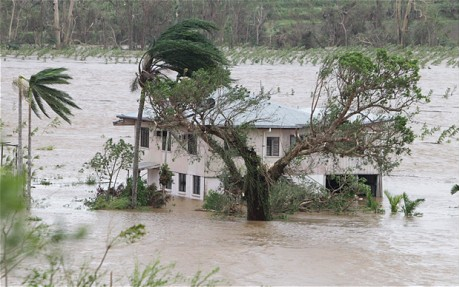First droughts, then floods, then cyclones, now bushfires: What next for Australia?
Expat Down Under Russell Ward felt strangely distanced from Australia’s recent spate of natural disasters – until someone in his family was affected. 
By Russell Ward
18 Feb 2011 Expats in Australia will remember this summer mainly for nature wreaking absolute havoc across the country. It began in the second week of the new year with the devastating floods that saturated large parts of Queensland, including the heart of the city of Brisbane, swamping scores of towns and taking lives in one of Australia’s most expensive natural disasters on record. More than 500,000 square kilometres of the state, including 86 towns and cities, were ultimately affected by the flooding and more than two million people found themselves living in areas declared disaster zones. While Queensland was still reeling from January’s devastating floods, the far north of the state was hit by a second natural disaster in the form of tropical cyclone Yasi, which smashed into the Australian east coast early on February 2. The monster cyclone, which crossed the coast between the towns of Innisfail and Cardwell, brought screaming winds and torrential rain to the region but, thankfully, lost some of its ferocious power as it made landfall in the early hours of the morning. In the week that followed the aftermath of Yasi, Australia was struck by yet another disaster as bushfires raged out of control around Perth and razed homes to the east and north of the city. As people were taken to hospital with smoke inhalation and large numbers were evacuated from their homes, local fire services struggled to keep the fires under control in strong and often unpredictable winds. Meanwhile, Sydney sweltered in a record-breaking heat wave with seven days of temperatures above 30 degrees in the city. The heavily populated suburbs to the west of Sydney endured more than eight days of 35 degrees and above, often reaching temperatures in the low 40s during the day and in the high 20s overnight. As the country received yet more punishment at the hands of Mother Nature, it begged the question of this expat Down Under: just what was in store next? While waiting for the next act to commence in this grisly summer performance, I realised that I was fast becoming almost anaesthetised to the latest crisis unfolding before my eyes. As each new disaster played out, I had become more and more detached from the obvious day-to-day horror experienced on the ground as I took each new crisis for granted and in my stride – why, it was just another Australian natural disaster after all, an almost annual occurrence in this part of the world. Each catastrophic event made for addictive TV but I wasn’t connecting on any level with the scenes taking place in front of me. These were parts of Australia I’d never been to, people I’d never met, and extreme natural disasters the likes of which I had never encountered back in mild, safe England. I simply couldn’t comprehend the danger and hardship that these people were enduring on a regular basis and, as harsh as it may sound, the images on the television remained just that – images of events seemingly far away and of no real concern or threat to my wellbeing. Fully expecting to hear news of yet another natural phenomenon to strike the mainland, I received a late night phone call advising that my wife’s grandmother was being immediately evacuated from her waterfront apartment, which happened to be situated in the direct path of Cyclone Yasi as it advanced on the city. Only then did the reality of this abnormal situation hit home as we waited tensely for several hours through the night wondering if she had made it to a safer place. …
First floods, then cyclones, now bushfires: what next for Australia?